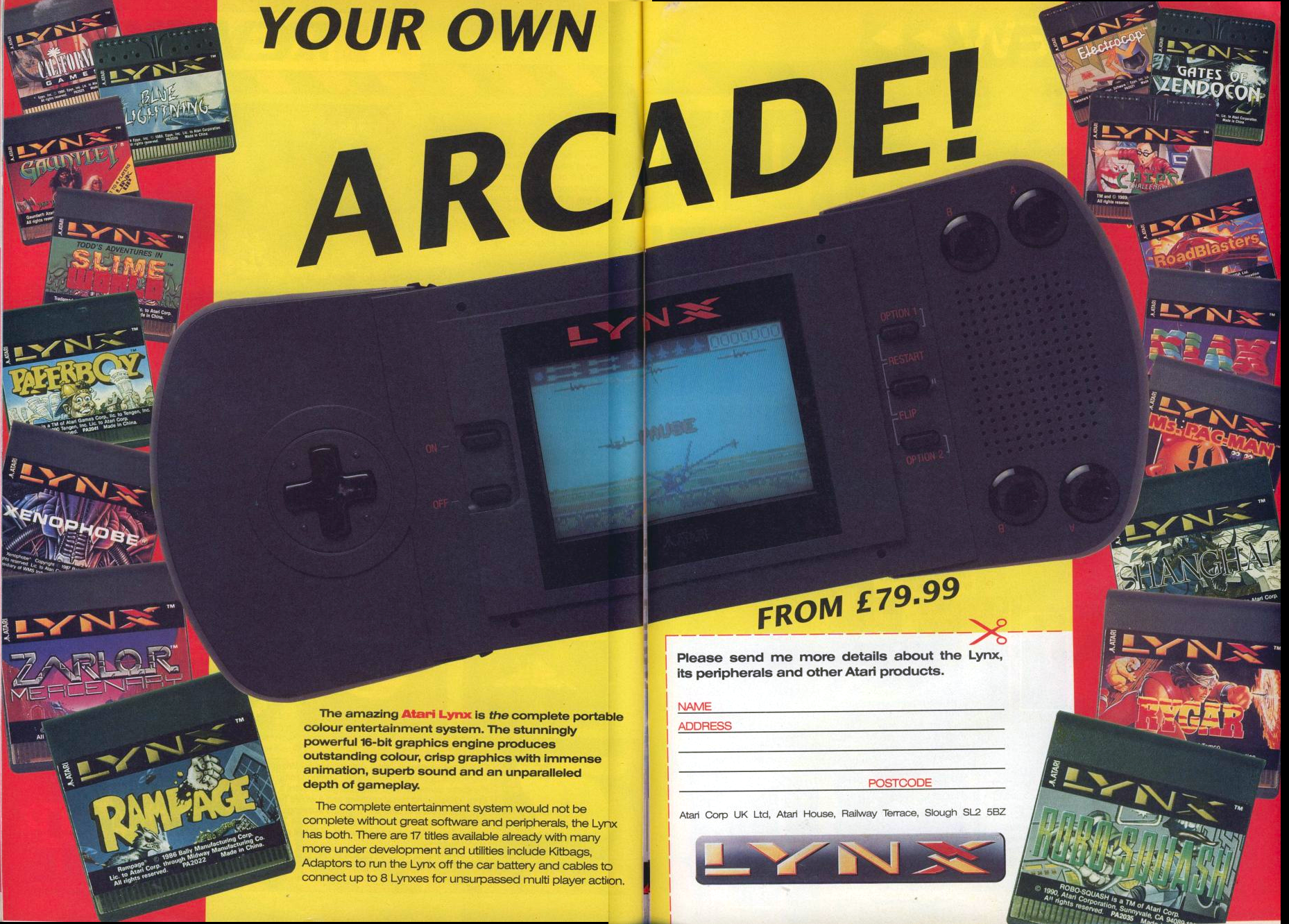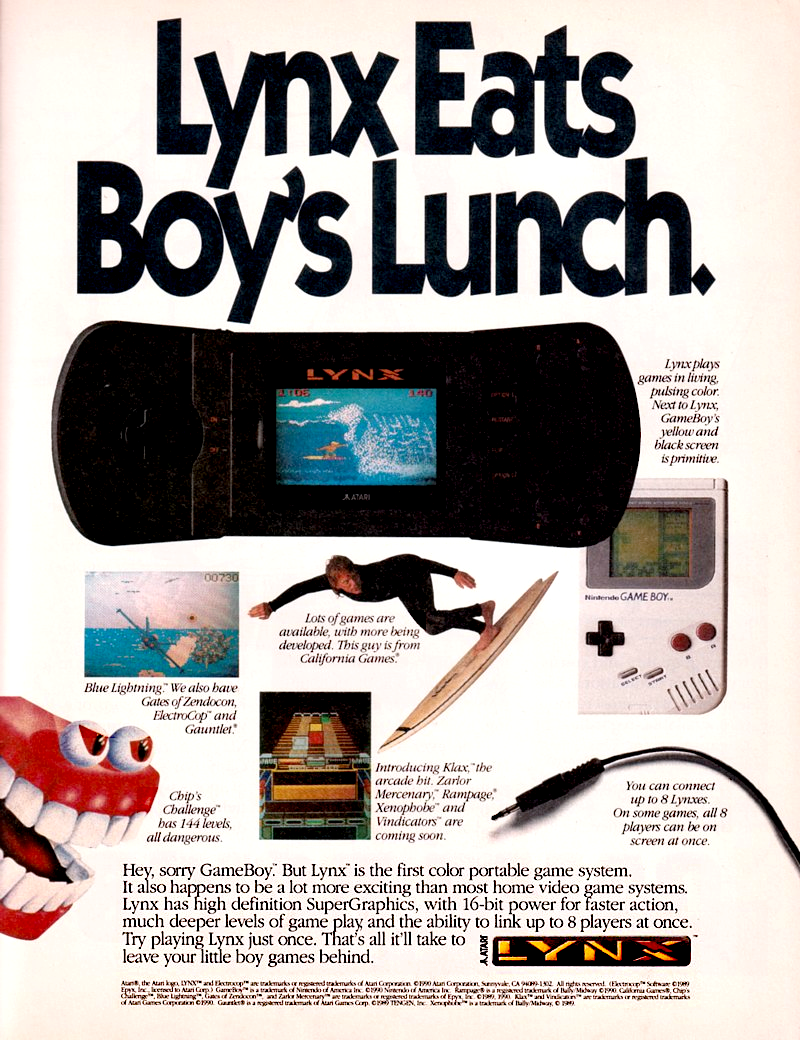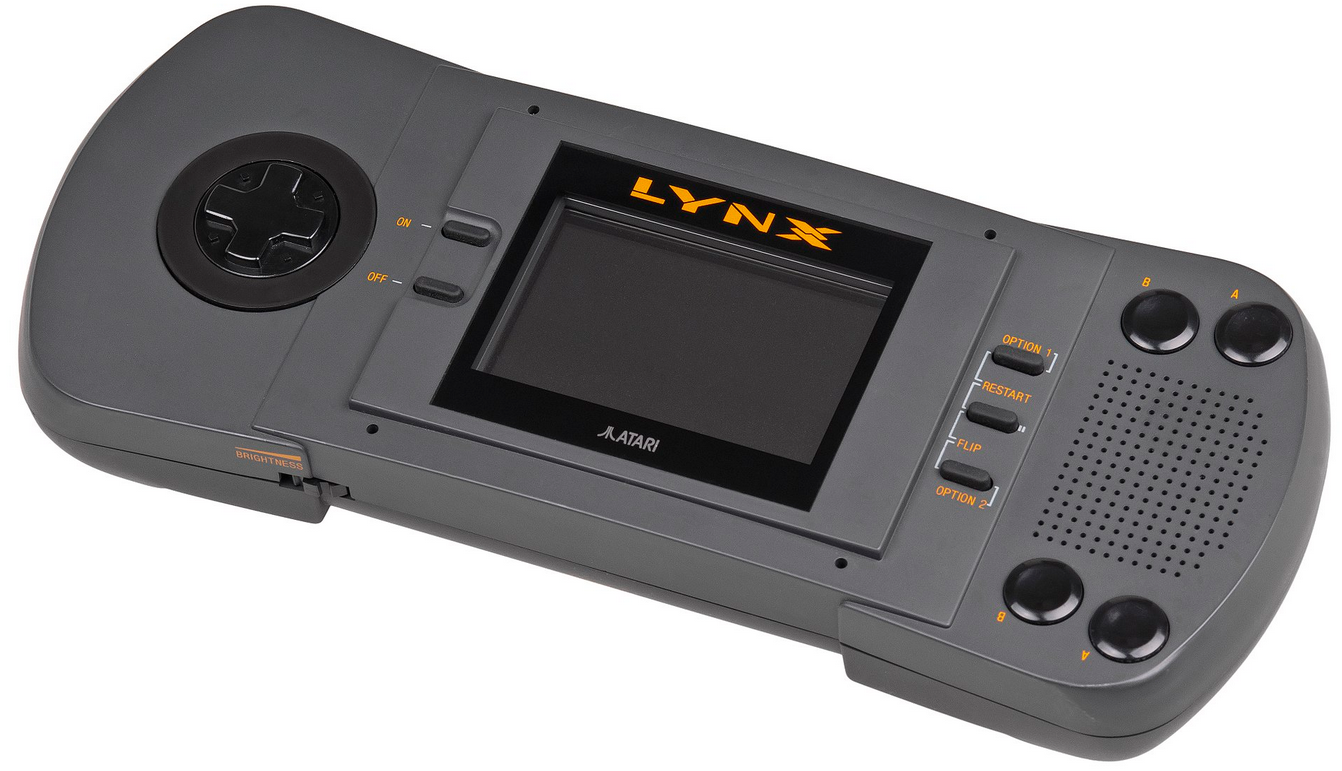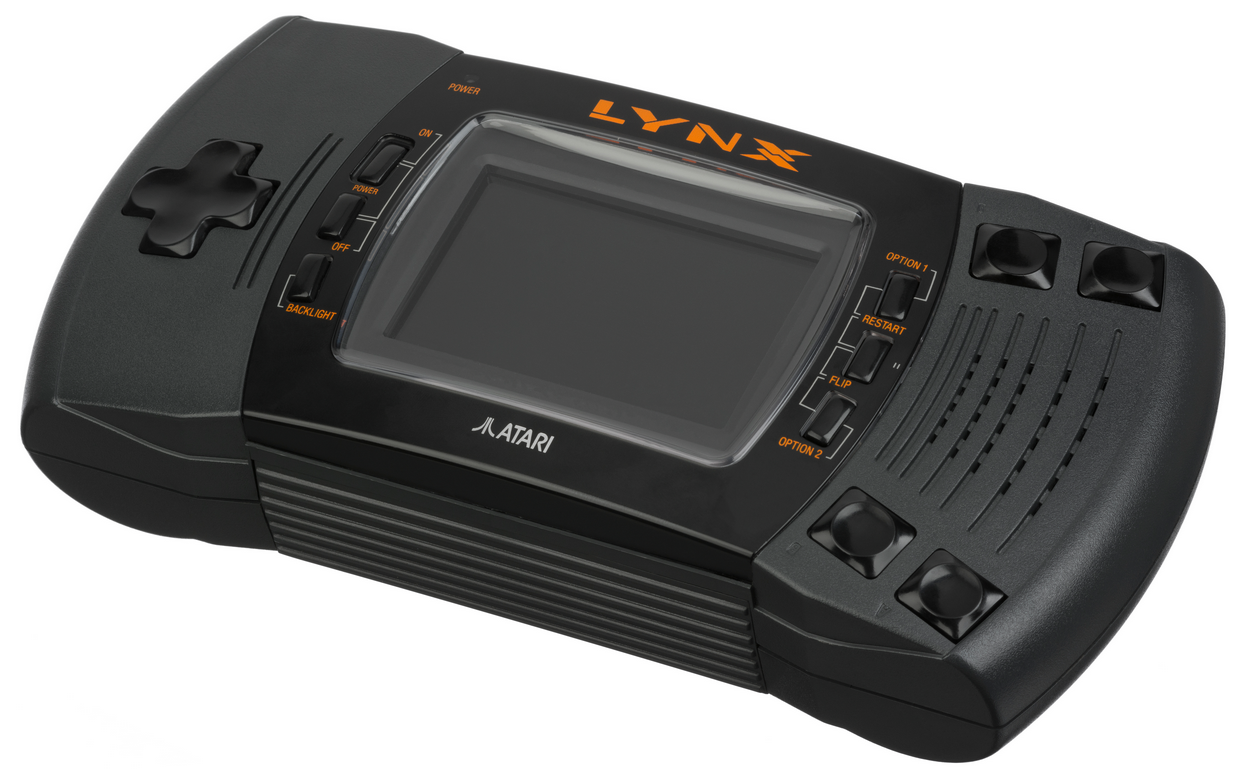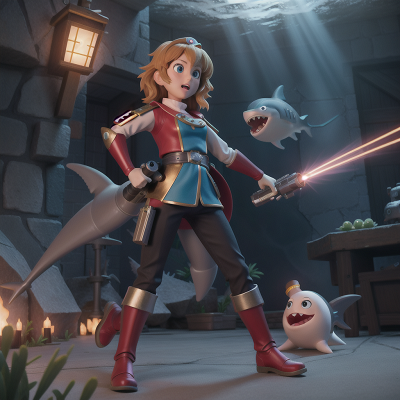Atari Lynx - Video Game Console From The Early 90's
5 years ago • 5,983 Views • 4 Files
The Atari Lynx is a 16-bit handheld game console that was released by Atari Corporation in September 1989 in North America, and in Europe and Japan in 1990. It was the world's first handheld electronic game with a color LCD. It was also notable for its advanced graphics and ambidextrous layout. The Lynx competed with the Game Boy (released two months earlier), as well as the Game Gear and TurboExpress, both released the following year. It was discontinued in 1996.
The Lynx system was originally developed by Epyx as the Handy Game. In 1986, two former Amiga designers, R. J. Mical and Dave Needle, had been asked by former manager at Amiga, David Morse, if they could come up with a design for a portable gaming system. Morse now worked at Epyx, a game software company that had a recent string of hit games. Morse's son had asked him if he could make a portable gaming system, prompting a meeting with Mical and Needle to discuss the idea. Morse convinced Mical and Needle to develop the idea and they were hired by Epyx to be a part of the design team. Planning and design of the console began in 1986 and was completed in 1987. Epyx first showed the Handy system at the Winter Consumer Electronics Show (CES) in January 1989. Facing financial difficulties, Epyx sought out partners. Nintendo, Sega, and other companies declined, but Atari Corp. and Epyx eventually agreed that Atari Corp. would handle production and marketing, while Epyx would handle software development. Epyx declared bankruptcy by the end of the year, and Atari essentially owned the entire project; both Atari and others, however, had to purchase Amigas from Atari archrival Commodore to develop Lynx software.
The Handy was designed to run games from the cartridge format, and the game data must be copied from ROM to RAM before it can be used. Thus, less RAM is available and the games initial load is slow. There are trace remnants of a cassette tape interface physically capable of being programmed to read a tape. Lynx developers have noted that "there is still reference of the tape and some hardware addresses" and an updated vintage Epyx manual describes the bare existence of what could be utilized for tape support. A 2009 retrospective interview clarifies that although some early reports claimed that games were loaded from tape, Mical says there was no truth in them: "We did think about hard disk a little."
Atari Corp. changed the internal speaker and removed the thumb-stick on the control pad before releasing it as the Lynx, initially retailing in the US at US$179.95. Atari Corp. then showed the Lynx to the press at the Summer 1989 CES as the "Portable Color Entertainment System", which was changed to "Lynx" when actual consoles were distributed to resellers.
The Lynx started off successfully. Atari reported that they had sold 90% of the 50,000 units it shipped in its launch month in the U.S. with a limited launch in New York. US sales in 1990 were approximately 500,000 units according to the Associated Press. In late 1991, it was reported that Atari sales estimates were about 800,000, which Atari claimed was within their expected projections. Lifetime sales by 1995 amounted to fewer than 7 million units when combined with the Game Gear. In comparison, the Game Boy sold 16 million units by 1995 because it was more rugged, cost half as much, had much longer battery life, was bundled with Tetris, and had a superior software library.
As with the actual console units, the game cartridges themselves evolved over the first year of the console's release. The first generation of cartridges were flat, and were designed to be stackable for ease of storage. However, this design proved to be very difficult to remove from the console and was replaced by a second design. This style, called "tabbed" or "ridged", used the same basic design as the original cartridges with the addition of two small tabs on the cartridge's underside to aid in removal. The original flat style cartridges could be stacked on top of the newer cartridges, but the newer cartridges could not be easily stacked on each other, nor were they stored easily. Thus a third style, the "curved lip" style was produced, and all official and third-party cartridges during the console's lifespan were released (or re-released) using this style.
In May 1991, Sega launched its Game Gear portable gaming handheld. Also a color handheld, in comparison to the Lynx it had a higher cost and shorter battery life (3–4 hours as opposed to 4-5 for the Lynx), but it was slightly smaller and was backed up by significantly more games. Retailers such as Game and Toys R Us continued to sell the Lynx well into the mid-1990s on the back of the Atari Jaguar launch, helped by magazines such as Ultimate Future Games who continued to cover the Lynx alongside the new generation of 32-bit and 64-bit consoles.
Lynx II
During 1990, the Lynx had moderate sales. In July 1991, Atari Corporation introduced the Lynx II with a new marketing campaign, new packaging, slightly improved hardware, better battery life and a new sleeker look. The new system (referred to within Atari as the "Lynx II") featured rubber hand grips and a clearer backlit color screen with a power save option (which turned off the LCD panel's backlighting). It also replaced the monaural headphone jack of the original Lynx with one wired for stereo. The new packaging made the Lynx available without any accessories, dropping the price to $99. Although sales improved, Nintendo still dominated the handheld market.
In 1995, Atari started shifting its focus away from the Lynx and put more focus on the Atari Jaguar. A handful of games were released during this time, including Battlezone 2000. In 1996, Atari shut down its internal game development.
The Atari Lynx's innovative features include being the first color handheld, with a backlit display, a switchable right-handed/left-handed (upside down) configuration, and the ability to network with up to 15 other units via its Comlynx system (though most games would network eight or fewer players). Comlynx was originally developed to run over infrared links (and was codenamed RedEye). This was changed to a cable-based networking system before the final release. According to Peter Engelbrite, when players walked through the beam, the link would be interrupted. The maximum stable connection allowed was eight players. Engelbrite also developed the first recordable eight-player co-op game, and the only eight-player game for the Atari Lynx, Todd's Adventures in Slime World, using the Comlynx system. Each Lynx needed a copy of the game, and one cable could connect two machines. The cables could be connected into a chain.
"The leading-edge display was the most expensive component, so the colour choice was one of economy. If the low-cost glass and drivers would have supported a million colours, I would have done it."
- Dave Needle, Lynx co-designer
The Lynx was cited as the "first gaming console with hardware support for zooming and distortion of sprites". Featuring a 4096 color palette and integrated math and graphics co-processors (including a blitter unit), its pseudo-3D color graphics display was said to be the key defining feature in the system's competition against Nintendo's monochromatic Game Boy. The fast pseudo-3D graphics features were made possible on a minimal hardware system by co-designer Dave Needle having "invented the technique for planar expansion/shrinking capability" and using stretched, textured, triangles instead of full polygons.
